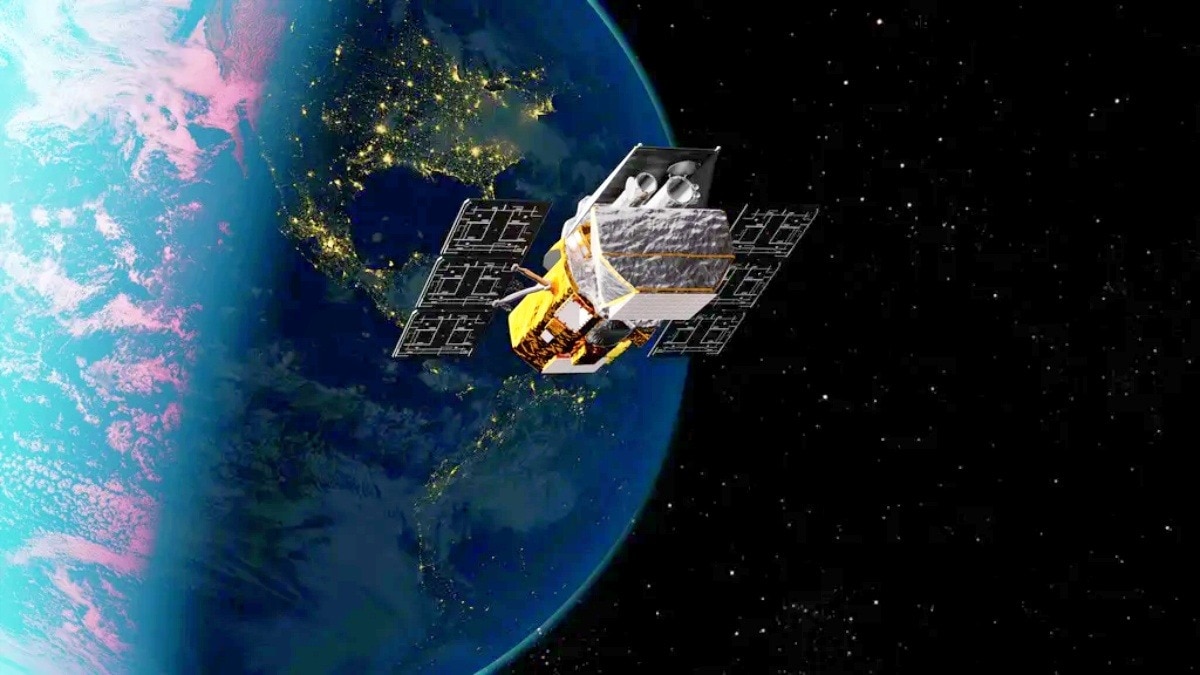Science
NASA Aims to Boost Swift Observatory into Higher Orbit

NASA is mobilizing efforts to prevent the 1.4-ton Neil Gehrels Swift Observatory from descending into Earth’s atmosphere. The space agency has announced plans to extend the life of this critical observatory by maneuvering it into a higher orbit. This initiative marks a significant shift, as NASA is now collaborating with private industry to execute complex satellite servicing operations that were once thought to be the stuff of science fiction.
Launched in 2004, the Swift Observatory has provided invaluable data on gamma-ray bursts, which are the universe’s most powerful explosions. The observatory quickly pivots to capture these events in gamma-ray, X-ray, ultraviolet, and optical light, delivering real-time information. In addition to its work on gamma-ray bursts, Swift also investigates black holes, supernovae, neutron stars, and various other cosmic phenomena.
Currently in low-Earth orbit at approximately 585 km above the planet, Swift is gradually losing altitude due to atmospheric drag. Without intervention, NASA estimates that the observatory faces a 90% chance of reentry and destruction in Earth’s atmosphere by late 2026.
To avert this scenario and preserve the $500 million spacecraft, NASA has awarded a $30 million contract to Arizona-based Katalyst Space Technologies. The company plans to deploy a modified version of its “Link” spacecraft for a docking and orbit-raising mission scheduled for May 2026. Originally intended for an internal demonstration, the Link will now be adapted to support one of NASA’s most significant astronomy missions.
One of the primary challenges is that Swift was never designed for servicing. The observatory lacks propulsion systems and docking aids, compelling engineers to devise innovative solutions. According to Katalyst CEO Andy Lee, the Link spacecraft will utilize a robotic attachment system capable of gripping onto small metal rims and flanges that were originally intended to secure Swift during its pre-launch transport. Once attached, Link will activate its thrusters to carefully elevate Swift into a stable orbit, thereby extending the operational life of the telescope.
The pursuit of satellite servicing capabilities has become a growing priority for the United States, driven by needs within both civil and military space missions. Both the Pentagon and NASA will closely observe the Swift docking operation, as it could serve as a proving ground for broader orbital maintenance capabilities.
As the geopolitical landscape in space evolves, recent advancements by China in satellite maneuvering and grappling technologies have raised concerns in Washington regarding potential military applications. For NASA, the immediate goal remains scientific: ensuring the continued operation of Swift to explore the universe’s most enigmatic regions.
With this ambitious plan, NASA not only aims to safeguard a key scientific asset but also sets a precedent for future collaborations with the private sector in space exploration and maintenance.
-

 World5 months ago
World5 months agoSBI Announces QIP Floor Price at ₹811.05 Per Share
-

 Lifestyle5 months ago
Lifestyle5 months agoCept Unveils ₹3.1 Crore Urban Mobility Plan for Sustainable Growth
-

 Science4 months ago
Science4 months agoNew Blood Group Discovered in South Indian Woman at Rotary Centre
-

 World5 months ago
World5 months agoTorrential Rains Cause Flash Flooding in New York and New Jersey
-

 Top Stories5 months ago
Top Stories5 months agoKonkani Cultural Organisation to Host Pearl Jubilee in Abu Dhabi
-

 Sports4 months ago
Sports4 months agoBroad Advocates for Bowling Change Ahead of Final Test Against India
-

 Science5 months ago
Science5 months agoNothing Headphone 1 Review: A Bold Contender in Audio Design
-

 Top Stories5 months ago
Top Stories5 months agoAir India Crash Investigation Highlights Boeing Fuel Switch Concerns
-

 Business5 months ago
Business5 months agoIndian Stock Market Rebounds: Sensex and Nifty Rise After Four-Day Decline
-

 Sports4 months ago
Sports4 months agoCristian Totti Retires at 19: Pressure of Fame Takes Toll
-

 Politics5 months ago
Politics5 months agoAbandoned Doberman Finds New Home After Journey to Prague
-

 Top Stories5 months ago
Top Stories5 months agoPatna Bank Manager Abhishek Varun Found Dead in Well









